Coasts & Mountains
Storming the beach as runoff flows
December 6, 2012
The first storm of a Southern California winter can be welcome and even romantic. Not so the aftermath—or as clean-up crews at the beach wryly call it, “The First Flush.”
“Those big storms really clean out the creeks and the catch basins,” says Carlos Zimmerman, assistant chief in the facilities and property maintenance division at the county Department of Beaches & Harbors, and a 33-year employee of the department. “Everything washes down—trees, bushes, firewood, plastic bottles, foam containers. Tons and tons of trash. Dead dogs and cats. Snakes. All kinds of things, you wouldn’t believe it. I saw a BMW come out of Topanga Creek once.”
That’s why, as rainstorms pelted Southern California last weekend, county and municipal crews were hitting the beaches to clean up debris. Their efforts are just one of the ways—from pending litigation to an upcoming Clean Water, Clean Beaches ballot measure—in which runoff will be front and center this winter in Los Angeles County
“Things like education efforts and ordinances against single-use plastic bags and polystyrene containers are making inroads, but it’s obviously an extreme problem,” notes Kirsten James, water quality director at Heal the Bay, the environmental advocacy organization.
Debris, she notes, is just the most visible pollution that courses into the ocean after a rainstorm. (This is one reason why health officials recommend staying out of the ocean for 72 hours after a rainstorm.)
“Heavy metals and bacteria are in there as well,” James says. “Some years, [the First Flush] looks like you’re not even in a First World country—more like you’re at a dump than at the beach.”
Kerry Silverstrom, chief deputy director at Beaches & Harbors, says that county beaches get runoff from more than 200 storm drains, as well as from Ballona Creek, which dumps runoff from miles inland into Santa Monica Bay. Though “trash catchers” installed throughout the system in recent years are intercepting more and more garbage, some still is making it down to the shoreline. Because storm water often continues to flow long after a heavy rainfall, and the debris it carries can churn on the waves for days before being washed up by high tide, the cleanup after a storm usually lasts long after the clouds part.
“That was one of the surprises when I first came to Beaches & Harbors,” says Silverstrom. “I had no idea that there was as much winter work on the beaches as summer work.”
That winter work, done by year-round maintenance crews, can mean anything from tending beach restrooms to piling sandbags to pulling lifeguard towers back from the pounding surf. Kenneth Foreman, chief of the department’s facilities and property maintenance division, says nearly 80 county workers were deployed at a dozen coastal beaches after last weekend’s rain storms, from equipment operators with sand-sanitizing machinery to hand crews who walked the high-tide line, plucking scraps of litter.
The winter crews, he adds, start at 6 a.m. and work every day, rain or shine, including weekends. “We worked Saturday and Sunday, even though it was storming,” he says. “Often by the time the general public hits the beach, they have no idea how dirty it was before they got there.”
There are things the public can do to help limit beach pollution, from proper disposal of motor oil and animal waste to keeping trash out of the storm drains to letting local stormwater coordinators know if flooding occurs in your neighborhood from trash-clogged catch basins.
On a longer-term level, the Board of Supervisors will conduct a January 15 public hearing on whether to seek property owner approval of the Clean Water, Clean Beaches measure through a mail-in ballot. The measure, prompted in part by toughened federal clean water standards, would raise $270 million for stormwater projects in Los Angeles County by assessing parcel owners based on the amount of runoff they generate (about $54 a year for a typical single-family residence.)
Meanwhile, cleanup crews will be fighting the good fight on a landscape that, when the storms hit, still too often becomes long on odor and short on scenery. At a Santa Monica city beach near the Pico/Kenter storm drain, a Heal the Bay staffer blogged last Friday morning that the sight and stench were “shocking.”
“I . . . saw runoff flowing fast out onto the Santa Monica beach, carrying along with it strong smells reminiscent of motor oil and gasoline, hundreds of plastic cups, chip bags, soda cans, an unusually high number of tennis balls, plastic bags (some full of pet waste), bits of Styrofoam, bottle caps, and more urban detritus,” blogged interactive campaigns manager Ana Luisa Ahern, who posted some haunting pre-cleanup photos on the organization’s web site.
“It was a saddening and somber sight, to say the least.”
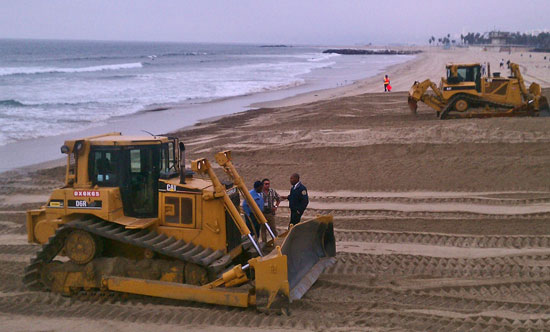
Kenneth Foreman Sr. of Beaches & Harbors, in jacket at far right, hits the sand after last weekend's storms.
Posted 12/6/12
The mountains’ new king of the hill
October 30, 2012
In 1976, David Szymanski’s grandparents took him on a Bicentennial road trip across the United States.
“I was eight,” he remembers. “We stopped at the Badlands and Mt. Rushmore, Yellowstone, Hoover Dam, maybe the Grand Canyon. The landscapes of the Great Plains and the West were so different in so many ways from what I was used to. I remember coyotes yipping in Montana and Wyoming. It was spectacular. I was amazed that such places existed.”
That amazement stayed with him—as a teenager in the Rust Belt, as a University of Michigan engineering student and, in his senior year of college, in a random-but-career-altering class on the literature of the American wilderness that “dredged up everything I’d felt at eight.”
Now Szymanski, a 44-year-old veteran of the National Park Service, is managing of one of Southern California’s own spectacular places as the new superintendent of the Santa Monica Mountains National Recreation Area.
Szymanski was named after a 10-month search for a successor to the popular Woody Smeck, who was the public face of the nation’s largest urban national park for more than a decade before moving on to a job as a deputy superintendent at Yosemite National Park.
It’s a tough act to follow, acknowledges Szymanski, who was half-joking but completely awestruck when he referred to Smeck as “St. Woody” during a recent meet-and-greet with public officials. The 153,750-acre recreation area is a complex jurisdictional patchwork with players at every level of government as well as powerful community and nonprofit interests; as superintendent, Smeck worked on everything from preservation guidelines for sensitive wildlife habitat to firefighting policy to funding for thousands of acres of open space acquisitions.
“He’s a great, great, great, great person,” Symanski says.
Szymanski, however, brings his own set of credentials, including long experience in areas with complex issues requiring cooperative management. He has spent nearly two decades working with parks and protected areas, including 14 years in the National Park Service.
His most recent stint was as superintendent of the Lewis and Clark National Historic Park in the Pacific Northwest, but he also has served at Everglades National Park in Florida, Voyageurs National Park in Minnesota, on the Senate Subcommittee on National Parks as a congressional fellow and, in the 1990s, in Madagascar, working in that country’s then-new national park system.
“I’ve always enjoyed working in places where we’ve had to work with communities and partners to get things done,” he says. “At Lewis and Clark, we included several state parks in our boundaries, and in the Everglades, it was often sugar farmers against fishing guys, and finding solutions among people that often otherwise wouldn’t be in the same room. This is the best place in the country for those kinds of things.”
On the job for all of three weeks, Szymanski has already hit the ground hiking, reaching out to stakeholders and learning the landscape even as he settles in with his wife, Elaine, and their 6- and 8-year-old sons, and tries to squeeze in the occasional bike ride (he’s an avid cyclist.)
“I’ve hiked from Newbury Park up the Boney Mountain Trail. I’ve biked the Backbone Trail. I went to Solstice Canyon with the granddaughter of [grocery store magnate] Fred Roberts, who assembled so much of the canyon property and sold it into conservation. I met the neighbors at Zuma and Trancas Canyons, and went to a lot of smaller areas. Of course, I’ve spent time at the new Visitor Center at the King Gillette Ranch.”
On a recent afternoon, he strolled along the Inspiration Loop Trail near the Visitors’ Center, discussing ways to improve signage—a small-but-complex question, particularly for pet owners, since the 5-minute walk between the center and the unmarked trailhead traverses both National Park land (which allows dogs) and land overseen by the Mountains Restoration and Conservation Authority (where dogs are forbidden).
But the hike, led by NPS Park Guide Bethany McCormick, was also a lesson in the storied history of the property’s Hollywood origins and its stints as a retreat for various cults and religions. And midway through, it was interrupted by a family of five mule deer, who paused on the sun-dappled trail and then bounded away.
“The mountains in a way say so much about Los Angeles, about the people who came here to seek their fortune and then assembled this megalopolis,” says Szymanski. “But what’s also impressive to me is knowing that in 1978, most of the area was not protected. It’s really humbling in some ways because there are so many people here who are so active and with such a long list of accomplishment in this area. Our job, I think, is to continue that vision and to bring the resources we have at our disposal to that partnership.”
And, he adds, to hold onto our sense of amazement.
“My wife went out for a walk last week near where we’re staying, which is near Cheesboro and Palo Comado Canyons, and took a movie for our children, so they could hear the coyotes yipping in the background,” he marvels. “She was less than a half-mile from a residential area, and yet you had the sounds of the wild.”
Posted 10/30/12
Riding to the rescue for 100 years
May 16, 2012

Bathing beauties were still posing on county lifeguard trucks in 1959. Photo/LA County Lifeguard Assn.
Summer isn’t summer in Los Angeles County without the bright yellow vehicles of the beach patrol.
“Iconic” is how Chief Lifeguard Mike Frazer described them last week as the Board of Supervisors gave the Department of Beaches and Harbors authority to sign a proposed agreement to take ownership of the fleet’s latest additions—45 custom-built Ford Escape hybrids that the county has leased since 2008. Under that proposed agreement, Ford Motor Co. would continue to advertise itself as the “Official Vehicle Sponsor” of the L.A. County beach lifeguards. So far, however, Ford has not agreed to a transfer of ownership.
Outfitted with state-of-the-art rescue equipment, the vehicles have saved not only lives but also more than $267,000 a year in fuel costs. “We’ve come a long way,” Chief Frazer says.
In fact, as the photo gallery below shows, beach rescue vehicles have come farther than Southern Californians might imagine. And to look back at their history is to dip into the region’s evolving—and sometimes dangerous—relationship with the beach.
Arthur Verge, an El Camino College history professor and veteran county lifeguard, notes that there was a time, not so long ago, when Southern Californians regarded the ocean as a frightening place that was best admired from afar. “Drownings were sadly common,” Verge says, adding that those who did go into the water often had no idea how to swim or how to get out of the powerful rip-currents that swept them out to sea in their heavy wool bathing outfits.
Professional ocean lifeguards didn’t even exist here until the early 1900s, when the City of Long Beach and real estate developers Abbot Kinney and Henry Huntington began paying “lifesavers” to reassure tourists outside the Long Beach Plunge and to promote the then-new developments of Venice and Redondo Beach.
Notably, Kinney and Huntington turned in 1907 to George Freeth, a celebrated Hawaiian surfer who not only trained L.A. County’s first generation of lifeguards but also pioneered rescue response.
“While fire departments were using horse-drawn rigs,” Verge says, “George Freeth, as early as 1912, was patrolling the beaches of Redondo, Hermosa and Manhattan Beach with a motorcycle, carrying a metallic rescue can in a special sidecar.”
Other early lifeguards were more low-tech.
“Santa Monica’s first lifeguard, ‘Cap’ Watkins, patrolled the beach on horseback,” Verge notes. “And George Wolf, the first Los Angeles city lifeguard, rode back on forth from Venice to El Segundo on a bike.”
By the late 1920s, both the city and county had lifeguards and trucks that ferried their gear along the boardwalks. That gear was stretched thin in the 1930s as the county lifeguards took over the beaches in the economically struggling South Bay.
“We didn’t get any new vehicles until the late ‘40s because World War II was on,” recalls Cal Porter, an 88-year-old retired county lifeguard and Malibu surfer. “If somebody had a bad rescue…we’d jump into this old 1933 International we had and head down Pacific Coast Highway. We’d be going as fast as we could, lights and sirens going—but all the other cars would be passing us.”
With wartime came the 4-wheel-drive jeep, developed by Willys-Overland Motors for the U.S. Army. The Willys allowed lifeguards for the first time to skip the boardwalk and drive directly across the sand. The jeeps were redeployed onto county beaches in the late 1940s; some remained in use for the next twenty years.
By the 1960s, the county had a fleet of Ford trucks with special racks for lifesaving equipment. Beaches filled with Baby Boomers and, occasionally, the products of the era’s experimental mood: In 1970, the county bought two customized dune buggies from the designer Meyers Manx. “But they didn’t work,” Verge says. “Sand would get into the carburetor.”
Lifeguard operations consolidated in the mid-1970s under the county, which by 1975 had the world’s largest lifeguard organization—a distinction that brought marketing opportunities. Among them was the chance for car companies to become the “official” rescue vehicle supplier to the now renowned L.A. County beach lifeguards.
Kerry Silverstrom, chief deputy director of the county Department of Beaches and Harbors, says that in 1986, Nissan and the beach lifeguards signed an agreement. “They got name recognition, ad copy and the ability to say they’re the official vehicle of the County beaches,” she notes, “and we got to use their vehicles for free.”
Nissan’s deal—releasing 30 chrome yellow 4×4 King Cab lifeguard trucks and six light pewter Stanza wagons onto the county beaches—lasted until 1994, when Ford won the contract. Nissan got it back in 1999, but Ford made another comeback with the hybrid SUVs in 2008.
Frazer says lifeguards were accustomed to pickup trucks with gas engines, and concerned that sand might damage hybrids. “But one of our missions is to protect the environment, so we said, ‘Let’s see if this works.’ ”
He says the results have been striking.
“The visibility is amazing and the turning radius is almost twice what we had, so we can navigate crowds better,” he says. “It has traction even in places like Point Dume, which has a steep sloping beach. “
Silverstrom says the relationship with Ford has been a financial and environmental lifesaver as the economy and the Internet have made branding rights a tougher sell at beaches. As for the next generation of vehicles, Frazer says the lifeguards “continue to look at all the options.” After all, only 100 years have passed since George Freeth rode to the rescue on his motorbike.
Posted 5/9/12
Seeking ultimate clarity in beach law
February 15, 2012
The beach-loving Ultimate Frisbee community has a message for the Board of Supervisors: Game on.
Several Ultimate Frisbee devotees, concerned about the impact of a new beach ordinance on their sport, came to the Hall of Administration Tuesday to give supervisors a piece of their minds—but ended up giving them a tutorial on the game, too.
“I don’t know what Ultimate Frisbee is. I’m sure it’s a great sport…But if you’re throwing projectiles around a beach when there are hundreds of thousands of people at the beach, the public safety comes first…It’s common sense that we’re asking you to employ,” board chairman Zev Yaroslavsky told the visiting players before asking them to explain their game.
“It’s a team sport. On the beach, it’s four on four or five on five, on a football-type field, not that big, with two end zones. And you advance the disc by throwing it to people on your team and you score by throwing it to a teammate in the end zone,” explained Alison Regan, a member of the Los Angeles Organization of Ultimate Teams, or LAOUT.
Yaroslavsky wondered how that would work in the midst of summer beach crowds: “So on a 90-degree day in Santa Monica in July or August, I would imagine it’s pretty tough to find space to have a game like this?”
“The beaches are large enough that we usually find some room,” Regan replied. “But we have to be accommodating, you’re right. When the public wants to walk through, we have to stop our play and we let the public walk through.”
It was the growth of new beach sports such as beach tennis and soccer that led to a recent liberalization of the county’s rules on ball-playing on the sand.
However, widespread erroneous media reports last week claimed that the county had enacted $1,000 fines for football and Frisbee playing at the shore, sparking a local uproar that quickly was heard ’round the world.
Although Department of Beaches and Harbors director Santos Kreimann moved to clarify the policy, saying that the new rules actually permitted football- and Frisbee-playing as long as it didn’t endanger other people on a crowded beach, the Ultimate Frisbee contingent was still troubled.
Tiffany Wallace, who plays on Solidarity Ultimate, which she described as a social justice Ultimate Frisbee team, said people should be allowed to use “Frisbees, footballs, soccer balls, even Ping Pong balls” at the beach without prompting “selective enforcement” under a too-vague ordinance.
Her sister, Julia Wallace, also addressed the board. “If the law is on the books, that’s enough to cause fear,” she said. “So it actually has to change.”
The board agreed. Supervisors, acting on a motion that Supervisor Don Knabe had submitted before the players testified, ordered a rewrite of the Frisbee- and ball-playing section of the new ordinance.
The new language should clearly state that “such activities by small groups and individuals are allowed at all times on the County beach” unless lifeguards direct otherwise for public safety reasons, the motion said.
Supervisor Mark Ridley-Thomas suggested that the players come back for an Ultimate Frisbee demonstration sometime.
And on their Facebook page, Ladies of La—Women’s Ultimate Frisbee, the disc-hurling activists declared victory.
Posted 2/15/12
Beach director says Frisbees are fine
February 9, 2012
Santos Kreimann says he has nothing against Frisbees at the beach—honest. And it’s OK with him if you want to toss a football along the shore, too, as long as you do it responsibly.
That’s why the county’s Beaches & Harbors director was baffled Thursday to find that what his department views as a liberalization of the rules for beach recreation is being widely misinterpreted to mean that Frisbee- and football-throwing is now subject to a $1,000 fine.
Not so, Kreimann says. After years of outright prohibition, a new ordinance which received final approval this week spells out for the first time the conditions under which Frisbees and footballs are allowed on county beaches—basically, in the off-season, or with a permit or permission from the lifeguard.
For years, he said, that kind of recreation had been outlawed altogether “to prohibit some knucklehead from acting like an idiot on the beach.”
The Frisbee flap has received big play on the airwaves and the Internet. The Drudge Report headlined an incorrect report by a local TV station: “LA County Approves $1,000 Fine For Throwing Football, Frisbees On Beaches.” Inquiries have poured into county offices from reporters as far away as London. The Los Angeles Times provided a factually accurate counterpoint to the coverage with an article headlined: “Ball playing, Frisbee tossing now allowed on L.A. County beaches.”
The new ordinance does give the county the right to ticket Frisbee scofflaws, like people who persist in throwing into large summer crowds, or when asked not to by a lifeguard. The first offense is $100—an amount set by the California Government Code. (Read the department’s statement on the ordinance here.)
Still, Kreimann doesn’t expect many citations will be issued.
“We don’t ticket anybody for throwing a ball on the beach, as long as they’re doing it responsibly,” he said.
As for those new $1,000 fines you may have heard about: yes, they’re in the ordinance but they apply to only a few kinds of misbehavior.
Those include nudity, shooting weapons and swimming or surfing during hazardous conditions or in prohibited areas.
The revisions to the ball-playing section of the ordinance were prompted in part by the growing popularity of sports like beach tennis and beach soccer, which are now permissible under certain conditions.
Posted 2/9/12
Calling all stewards of the sea
January 11, 2012
Protectors of Southern California surf just got a lot of new turf to keep an eye on. And they need your help.
On January 1, the California Fish and Game Commission gave marine ecosystems a regulatory facelift, creating 36 new Marine Protected Areas spanning 187 square miles of water. Several of the new areas, known as MPAs, are around Point Dume in Malibu. The designation places limits and sometimes prohibitions on fishing, and aims to create safe havens where sea life can thrive and multiply.
The environmental nonprofit group Heal the Bay was instrumental in helping to get the new designation. Now the organization is training “MPA Stewards” through a program called MPA Watch. Staff scientist Dana Murray, who manages the program, says you don’t need to be an expert to lend a hand.
“We had many supporters and people who worked hard to get the MPA approved in L.A. County,” she said. “We thought this was a good way for people to stay involved.”
Pairs of volunteers with binoculars, clipboards and cameras already have started canvassing the beaches, recording data on what they see people doing, from scuba diving to commercial squid fishing.
Murray said the data will be used to help promote legal recreational activities and to lend context to the marine biological data scientists are gathering. (Without monitoring the humans, Murray said, “you are skipping a species that affects all the rest.”) Perhaps most important, the data will be reported to the Fish and Game Commission in hopes of helping the agency stretch its limited enforcement resources.
However, Murray made it clear that MPA Watch is about collecting scientific data and not policing or reporting illegal acts.
“This is one way for us to aid the state without actually being the enforcement,” she said.
Those who care about marine life and enjoy long walks on the beach can become official stewards by attending two upcoming classes. The first class is scheduled for Wednesday, January 18, from 6 p.m. to 8 p.m. at Heal the Bay’s Santa Monica Pier Aquarium. The second class takes place “in the field” at Point Dume on Saturday, January 21, from 9:30 a.m. to 11:30 a.m.
To register, you must be at least 15 years old and RSVP by Tuesday, January 17 (not January 13, as is posted on the website). No experience is required, but volunteers should be able to spend 1 to 2 hours outdoors doing some moderate hiking. A minimum 6 month commitment of 4 surveys per month is required, but survey times are flexible. Students can get involved as a way of fulfilling community service requirements at school.
Training sessions first began last March, and if you miss this month’s training classes, more are expected to be scheduled in the future.
The new designations grow out of the Marine Life Protection Act of 1999, which directed the state Fish and Game Commission to redesign California’s system of MPAs after finding it inefficient, having been established piecemeal instead of by scientific plan. In December, 2010, after receiving input from experts, the public and local government, the Fish and Game Commission created a new map of MPAs in Southern California. Click here to take a look.
Posted 1/11/12
Santa Monica Mountains man on the move
December 14, 2011
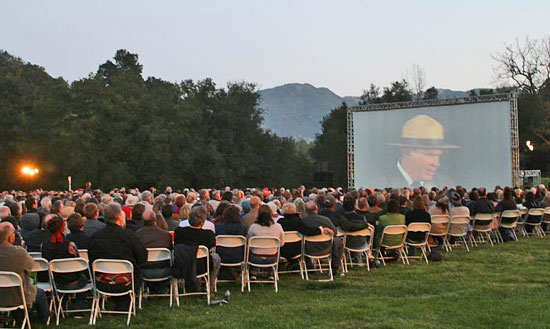
On the big screen, Woody Smeck introduces a sneak preview of Ken Burns' National Parks documentary series.
Woody Smeck may speak softly, but he carries a big reputation.
With his wide-brimmed hat and low-key eloquence, Smeck has become the public face of the Santa Monica Mountains National Recreation Area and in many ways its staunchest guardian.
As superintendent of the country’s largest urban national park for more than a decade, Smeck has presided over the recreation area as it added thousands of acres of new public open space. Working with partners from every level of government as well as those from community and non-profit groups, Smeck has helped shape everything from firefighting practices to educational outreach to preservation guidelines for sensitive wildlife habitats.
And he has been a tireless advocate for the 153,750-acre recreation area, appearing in this video and countless other forums to explain the complexity and importance of the vast natural preserve at the edge of the one of the world’s largest cities.
Now he’s getting ready to to make his mark on another national treasure. In April, he will become Yosemite National Park’s new deputy superintendent. And those who’ve walked the path with him here are already feeling the loss.
“I’m so sad,” said Kim Lamorie, president of the Las Virgenes Homeowners Federation, which honored Smeck with its “Citizen of the Year” award in May.
“There is only one Woody Smeck.”
In honoring Smeck, Lamorie credited his “quiet but persuasive ability to finesse funding” of new open space acquisitions. Future generations, she said, will “revel in the wonder of the wild and wonderful resources you have preserved.”
Geoffrey Given, who heads the advisory board for the Santa Monica Mountains campus of the educational program NatureBridge, said Smeck’s impending departure is “a huge loss for Santa Monica [but] a huge gain for Yosemite.”
“He has been an unbelievable advocate and supporter of what we do,” Given said. “At all of our fundraising events, he’d show up in uniform with his flat-brimmed hat on.” Smeck also put his money where his hat was, backing the organization’s educational outreach with funds from his own agency’s budget, Given said.
“I think he has made historic contributions to the National Recreation Area,” added Joe Edmiston, who as executive director of the Santa Monica Mountains Conservancy has worked closely with Smeck for years. “His shoes will be very difficult to fill.”
In announcing the appointment, Yosemite Superintendent Don Neubacher said Smeck “has the ideal background to helpYosemite achieve unequalled operational and innovative excellence.”
Smeck said Neubacher first reached out to him about joining the Yosemite team about 1½ years ago. With his youngest daughter still in high school, the timing wasn’t right initially. But now that she’s graduating at the end of this school year, Smeck decided to accept the offer.
He’ll head to Yosemite solo in early April and will live in park service housing until his wife, Karen, can join him, probably in July. They plan to buy a home in Mariposa.
The new position could put Smeck in line for greater executive responsibilities down the line—either at another national park or in Washington, D.C.
But he said he’ll miss his Santa Monica Mountains stomping grounds, where he got his professional start in 1991 as a young landscape architect with degrees from Cal Poly Pomona. Smeck reached the recreation area’s top job in 2001. He still marvels that he was able to get there without first transferring to other points around the National Parks system.
“People told me not to expect to stay [in one location] very long,” said Smeck, now 49.
But stay he did—long enough to rub shoulders with influential people ranging from TV documentarian Ken Burns to President George W. Bush.
Bush’s visit in 2003, he said, was a high point—a recognition of the power of collaborative work toward a common goal.
“It was a great opportunity to talk to him about how partnerships work, how cooperative management works, and he genuinely listened to what I had to say,” Smeck said, recalling a 45-minute hike into the Rancho Sierra Vista area of Point Mugu State Park with Bush and a small group that included Supervisor Zev Yaroslavsky. “To get a presidential visit…was very uplifting for everyone.”
He said he’s also proud of completing a general management plan that “provides a unifying framework for preservation and stewardship” of parklands going forward. That plan, created with various state partners and the Santa Monica Mountains Conservancy, established a “cooperative vision” that has informed an array of other actions, including blueprints for fire management and land protection.
His career is a natural outgrowth of an outdoorsy childhood in California’s Central Valley. “I spent my summers hiking and camping in the Sierra Nevada Mountains—especially Sequoia National Park,” he said. “By the time I was 21, I had experienced most of the Sierra Nevada wilderness.”
His first day on the job in the Santa Monica Mountains National Recreation Area started inauspiciously when he got lost trying to find the Rancho Sierra Vista trailhead.
“Back then, you had to drive through residential areas and gravel roads to find the obscure parking lot,” he said. “One of my first assignments was to develop a new entry road and trailhead from Potrero Highway. Today, I’m happy to report that visitors have a very scenic entry drive and wonderful staging area with good signs, drinking water, and clean restrooms to start their park experience at Rancho Sierra Vista.”
As he prepares to venture north to the world-renowned glories of Yosemite’s Half Dome and Bridalveil Fall, he acknowledged that he’ll miss the lesser-known but equally beloved natural treasures he’ll be leaving behind in the Santa Monica Mountains.
“Oh wow, there are so many incredible places. If I had to pick one, the place that’s the closest manifestation of heaven for me is the Old Boney Trail in Point Mugu State Park,” he said. “It is just such a pristine, wild, raw, natural environment. It’s as if you’ve been transported into another world. It is spectacular.”
For Smeck’s photo of the Old Boney Trail and some of his other favorite sights in the Santa Monica Mountains, check out a gallery of his photos below.
Posted 12/14/2011
Homing in on Topanga development
August 25, 2011
The public is being invited to weigh in on what should be included in an environmental review of plans to build four homes on a Santa Monica Mountains ridgeline above Topanga Canyon.
The residences would be built on previously undeveloped land along the Calabasas Peak Motorway—a 40-plus acre expanse bordered by open space and trails on the west and south, and “low density” residential on the north and east.
The scenic ridgeline has long been a visual boundary marker between Calabasas and Topanga Canyon, and overlooks both areas.
Each of the proposed homes would be located on a 10-acre site on the property, which has been designated a “significant ridgeline,” meaning that any development within 50 feet would require a variance to the county’s ridgeline ordinance. In preparation, the county is preparing a single environmental impact report for all four homes—and now is seeking public input to determine all the issues that the EIR should explore.
The scope of work proposed for the four homes “will create potentially significant impacts to the significant ridgelines, native flora and fauna, and raises issues of concern for safety which will be resolved under one Environmental Impact Report (EIR) for the project area,” according to a notice of preparation by the county’s Department of Regional Planning.
The notice says that the project would require installation of a 277,000-gallon water tank at the ridgeline’s highest peak, as well as four septic systems. There are coast live oaks throughout the property; the report said a permit would be needed to “encroach upon the protected zone for three oak trees to widen the existing Calabasas Peak Motorway to Fire Department standards.”
An overview of what’s being proposed will be presented at a public meeting on Wednesday, Aug. 31, at the Topanga Community House, 1440 N. Topanga Canyon Boulevard, from 7 p.m. to 9 p.m. Regional planning officials are asking for suggestions and comments from the public at the meeting, or in writing by Sept. 15.
Learn more about the project here, or at the Calabasas or Agoura libraries.
Posted 8/24/11
Robber hits beach parking lots
June 30, 2011
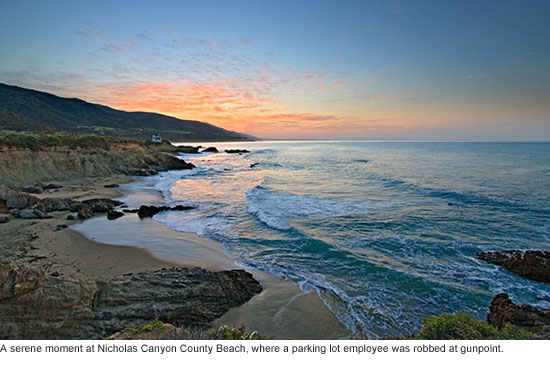 Los Angeles County officials are demanding new safety measures following back-to-back armed robberies this month of privately-contracted beach parking lot employees—crimes their company suspects may have been orchestrated by insiders.
Los Angeles County officials are demanding new safety measures following back-to-back armed robberies this month of privately-contracted beach parking lot employees—crimes their company suspects may have been orchestrated by insiders.
In all, more than $8,000 reportedly was stolen from employees of Parking Concepts, Inc., which has a contract with the county to manage its beachfront parking lots. No one was hurt in the separate incidents.
The first robbery occurred shortly after 9 p.m. on Wednesday, June 9, while a supervisor was dropping off money at the company’s Marina del Rey office. As he climbed the steps to open a security gate, a gunman emerged and ordered him to the ground, the company said in an e-mail to the county’s Department of Beaches and Harbors. The suspect fled with about $1,500.
The second crime took place 11 days later, on a Sunday at around 8 .pm. in the deserted lot of Nicholas Canyon County Beach, just south of the Ventura County line. Two Parking Concepts employees, one of them a supervisor, were there to lock the entrance for the night when a man in a ski mask confronted them with a handgun. He demanded money they’d collected earlier at lots along 27 miles of coastline–$6,300 stashed in the trunk of their company car. The suspect fled in a white Nissan sedan.
No arrests have been made in the unusual thefts, both of which are being investigated by the Los Angeles County Sheriff’s Department.
Vivian Sanner, who oversees parking operations for the Department of Beaches and Harbors, says an executive with Parking Concepts told her that they believe the same man was responsible for both crimes and that he was familiar with the company’s collection patterns, including the fact that Nicholas Canyon was the final stop.
“They think it’s an inside job,” Sanner said. The company did not return calls for comment.
Under their contract, Parking Concepts is responsible for refunding the stolen money to the county, which has directed the company to come up with measures to help avoid a reoccurrence, including the possible use of armored vehicles.
“We’ve asked for a plan that would not only protect our revenue but that, more importantly, would protect the safety of the employees,” said Kerry Silverstrom, chief deputy of beaches and harbors.
In an e-mail last week, Parking Concepts outlined some of its initial steps, which include: hiring armed guards to be present at the beach parking office during peak times; bringing aboard a security consultant to analyze the lot operation, and outfitting company vehicles with “drop safes” for money.
Posted 6/30




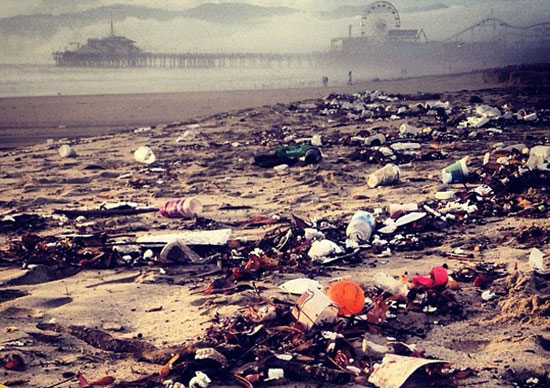
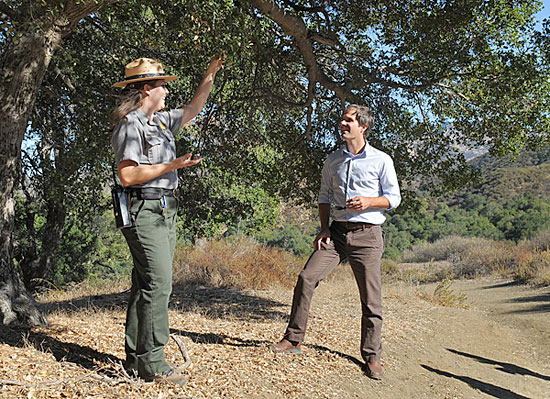


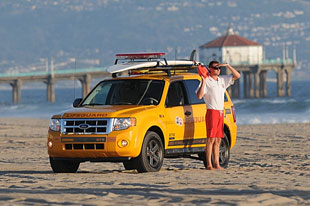











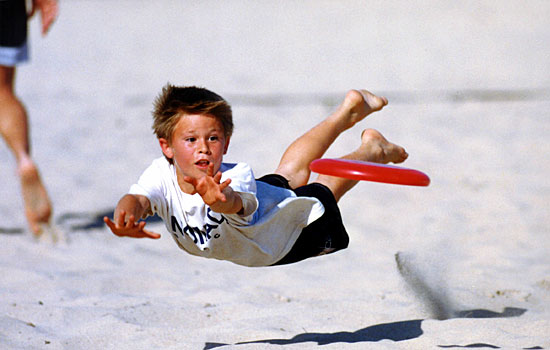
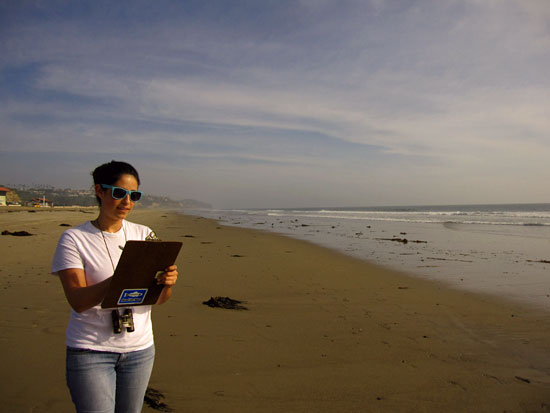
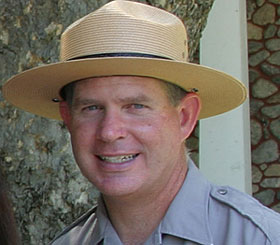






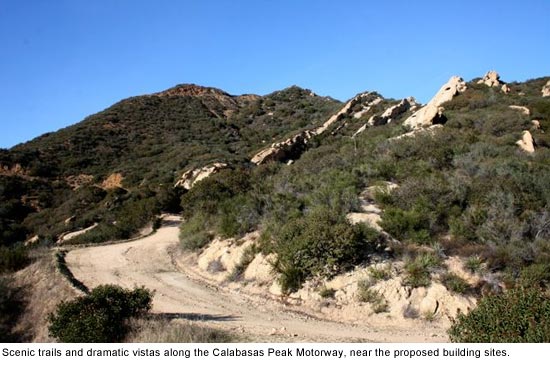







 405 bridge work causes a stink
405 bridge work causes a stink
